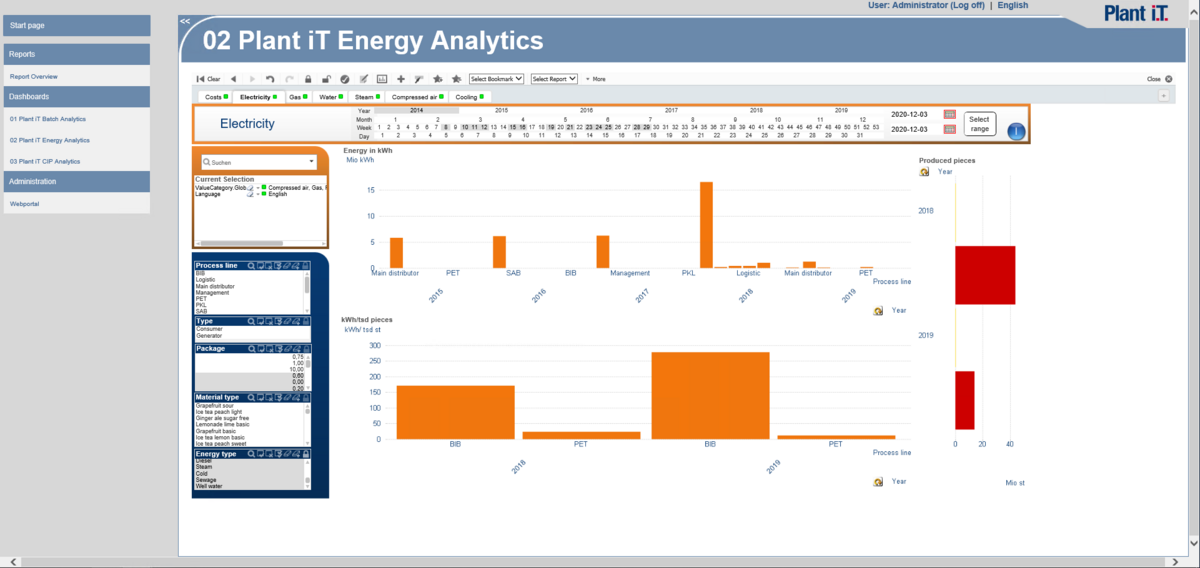Step 2: Energy data analysis
The consumption data acquired during the first step can be analysed with our energy management software according to the following criteria:
- Energy purchased from an energy provider
- Feeders with the highest consumption values
- Detailed analysis of critical plants and production units
- Peak load analysis
On the basis of these analyses and combined with the planning data from the production plans it is possible to:
- Create daily operation schedules with operating times, arrival and departure times for technical supply systems and auxiliary plants
- Detect production units or process steps which are critical in terms of energy consumption
- Check the energy status of technical supply systems
This approach enables sustainable energy-optimised processes.
Avoiding peak loads
Consumption analyses can also be used to develop strategies and actions to avoid repeated peak loads and to reduce loads in general. This involves considering various scenarios:
- Consumers which are running permanently are checked to determine whether this is actually necessary
- Consumers which require huge amounts of energy, but which do not recognise each other, are re-configured to ensure intercommunication
- Performance enhancement, e.g. partial disconnection of multiple-line plants
- Specific disconnection and coordinated reconnection of defined consumers
Simple energy management: load-oriented disconnection
During load-oriented disconnection, the energy data acquisition unit communicates with the controllers of the auxiliary plants to ensure automated load shedding. However, technological problems may arise, as load shedding is not coordinated with the process.
Integrated energy management system: coordinated disconnection
The energy management system is integrated into the process control system for coordinated disconnection. This ensures that automatic and technologically-coordinated load shedding is possible. This helps to avoid technical problems.

